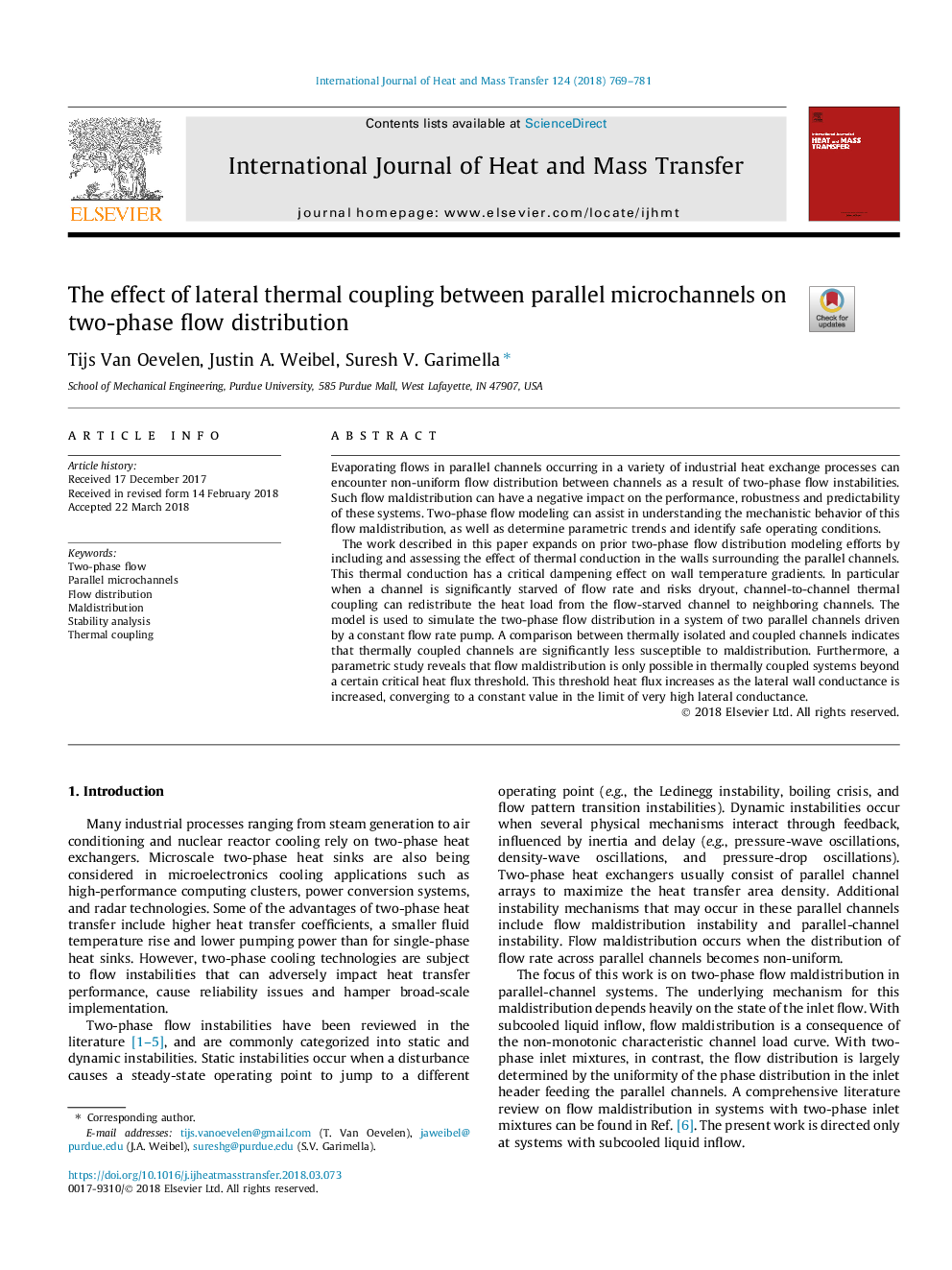| Article ID | Journal | Published Year | Pages | File Type |
|---|---|---|---|---|
| 7054235 | International Journal of Heat and Mass Transfer | 2018 | 13 Pages |
Abstract
The work described in this paper expands on prior two-phase flow distribution modeling efforts by including and assessing the effect of thermal conduction in the walls surrounding the parallel channels. This thermal conduction has a critical dampening effect on wall temperature gradients. In particular when a channel is significantly starved of flow rate and risks dryout, channel-to-channel thermal coupling can redistribute the heat load from the flow-starved channel to neighboring channels. The model is used to simulate the two-phase flow distribution in a system of two parallel channels driven by a constant flow rate pump. A comparison between thermally isolated and coupled channels indicates that thermally coupled channels are significantly less susceptible to maldistribution. Furthermore, a parametric study reveals that flow maldistribution is only possible in thermally coupled systems beyond a certain critical heat flux threshold. This threshold heat flux increases as the lateral wall conductance is increased, converging to a constant value in the limit of very high lateral conductance.
Keywords
Related Topics
Physical Sciences and Engineering
Chemical Engineering
Fluid Flow and Transfer Processes
Authors
Tijs Van Oevelen, Justin A. Weibel, Suresh V. Garimella,
